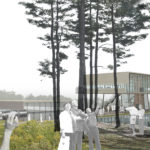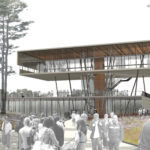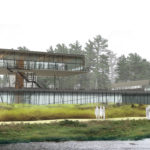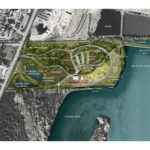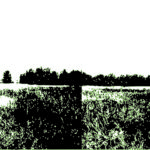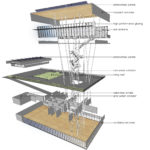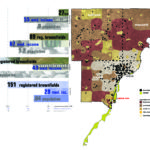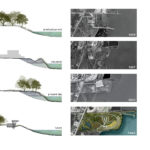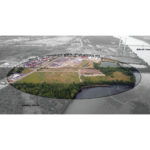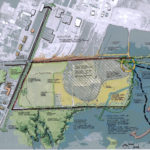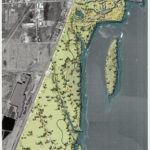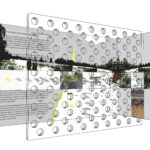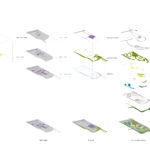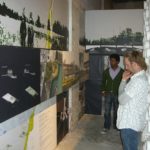DRIWR LANDSCAPE URBANISM PROJECT PUBLISHED IN TOPOS
PROJECT. The Detroit Wildlife Refuge project has been published in the April edition of TOPOS magazine.
CONCEPT. Landscape Urbanism advocates a purposeful discourse between ecological systems, human activities, and the post-industrial landscape, ultimately manifesting in the deliberate celebration of the urban void. This celebration glorifies the interstitial, so that the void is inevitably romanticized by, and is necessary to, the burgeoning Landscape Urbanism profession. Reliance on the void introduces a basic set of dilemmas: In order to focus on the space between buildings, there must be buildings; planning creative programming between infrastructural systems requires existing infrastructure; implementing a proposed hybrid ecology between urban eco-systems and human eco-systems requires human eco-systems. All of these very specific examples result in a single common statement: In order to have an urban void, there first needs to be an urban, or rather a recognizable urban density.
What if the relationship between building density and void are reversed and the void is now the primary urban component? What does it mean to reclaim a contaminated post-industrial site within a post urban city, a city whose built fabric has devolved into vast stretches of rural landscape? Operating within the current design process parameters, Landscape Urbanism succeeds primarily in high-density urban fabrics such as New York City, Boston, and Chicago. In these cities, individual brownfield sites are easily identifiable as precious, rare interstitial spaces. These voids are ultimately reclaimed, remediated, and creatively stitched back into the dense urban fabric to be utilized by their host city. In post-industrial cities such as Detroit however, the urban condition (building density) has dissolved as the metropolis has decentralized. Neither the city nor the suburbs sustain the density required to find the contaminated land valuable, and thus lack a desire to stitch these abandoned outposts into their community. Combine all of these individual outposts together and the metropolitan region is scarred by larger swaths of contaminated land, further compartmentalizing dissipated downtowns from their thriving suburban counterparts. On the national scale, we can recognize a larger post-industrial megalopolis landscape: shrinking cities left to die back into a growing contaminated terrain. For the City of Detroit, the void is now the majority on a multiplicity of scales. This presents the fundamental challenge of practicing a type of Landscape Urbanism appropriate to Detroit’s post urban condition. With the Detroit River International Wildlife Refuge Gateway, the Detroit based architecture and landscape firm, Hamilton Anderson Associates (HAA), seeks to broaden the Landscape Urbanism discourse by implementing a strategic, multi-scalar design process that reexamines urban and redefines the void.





